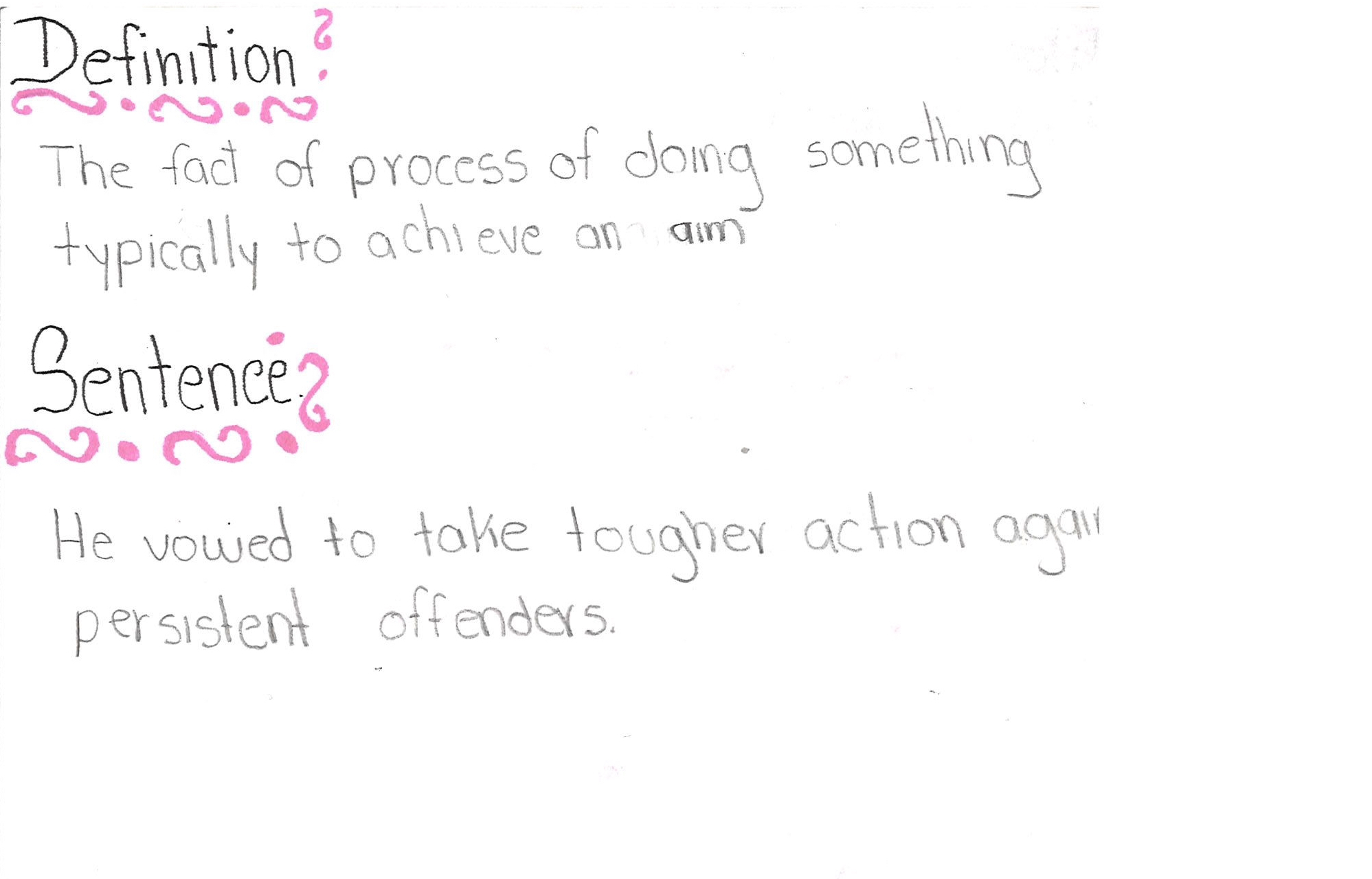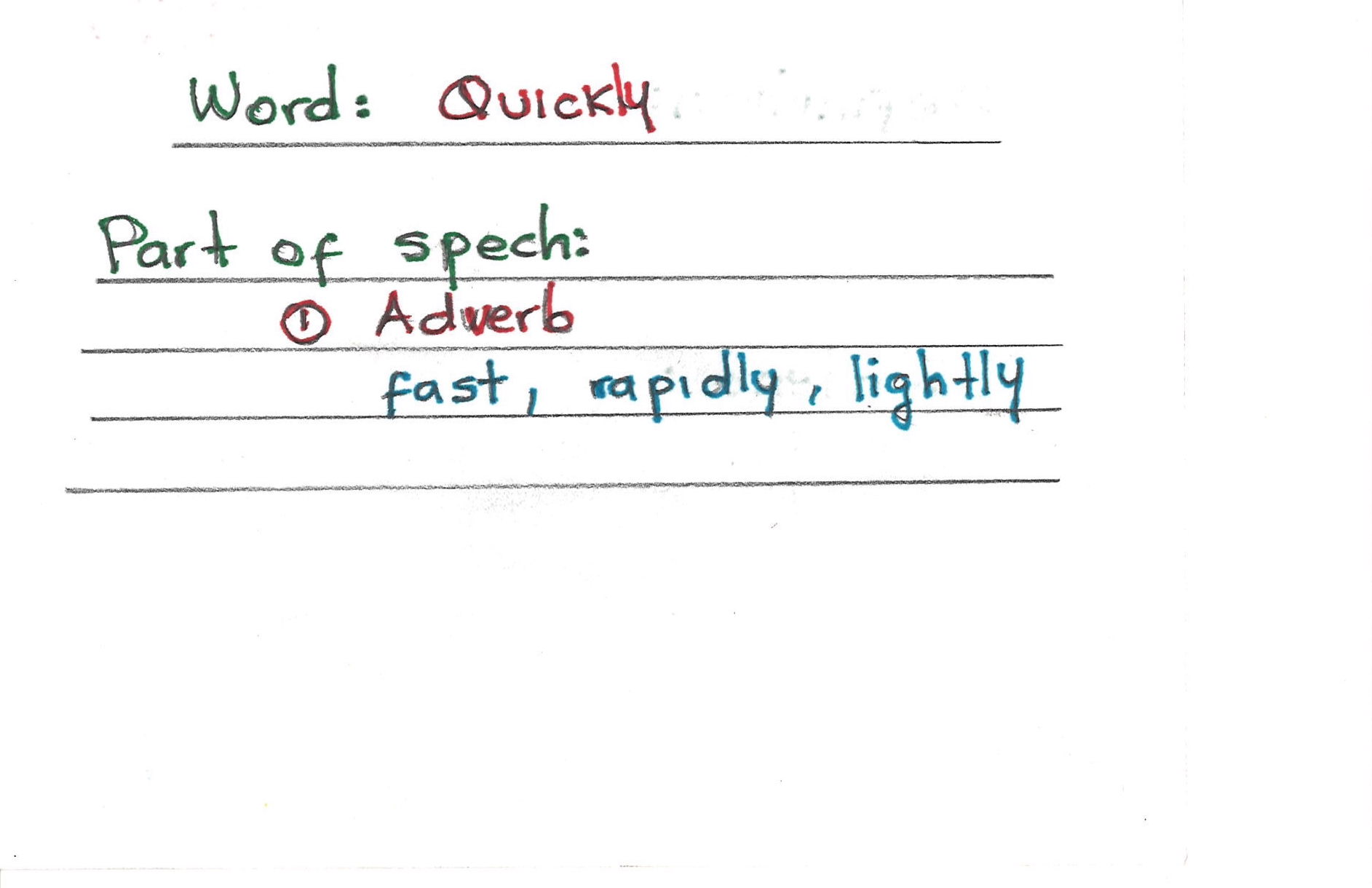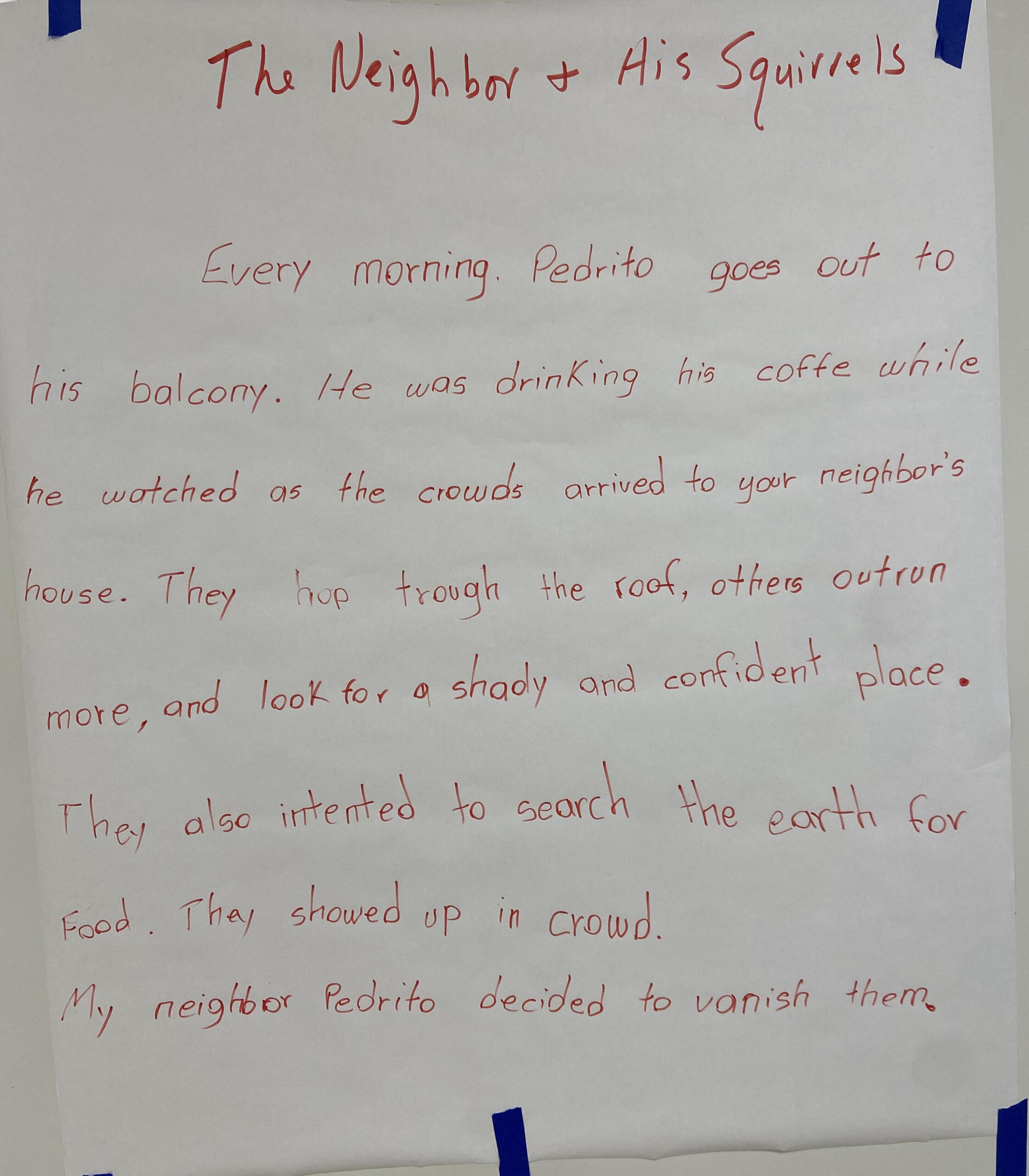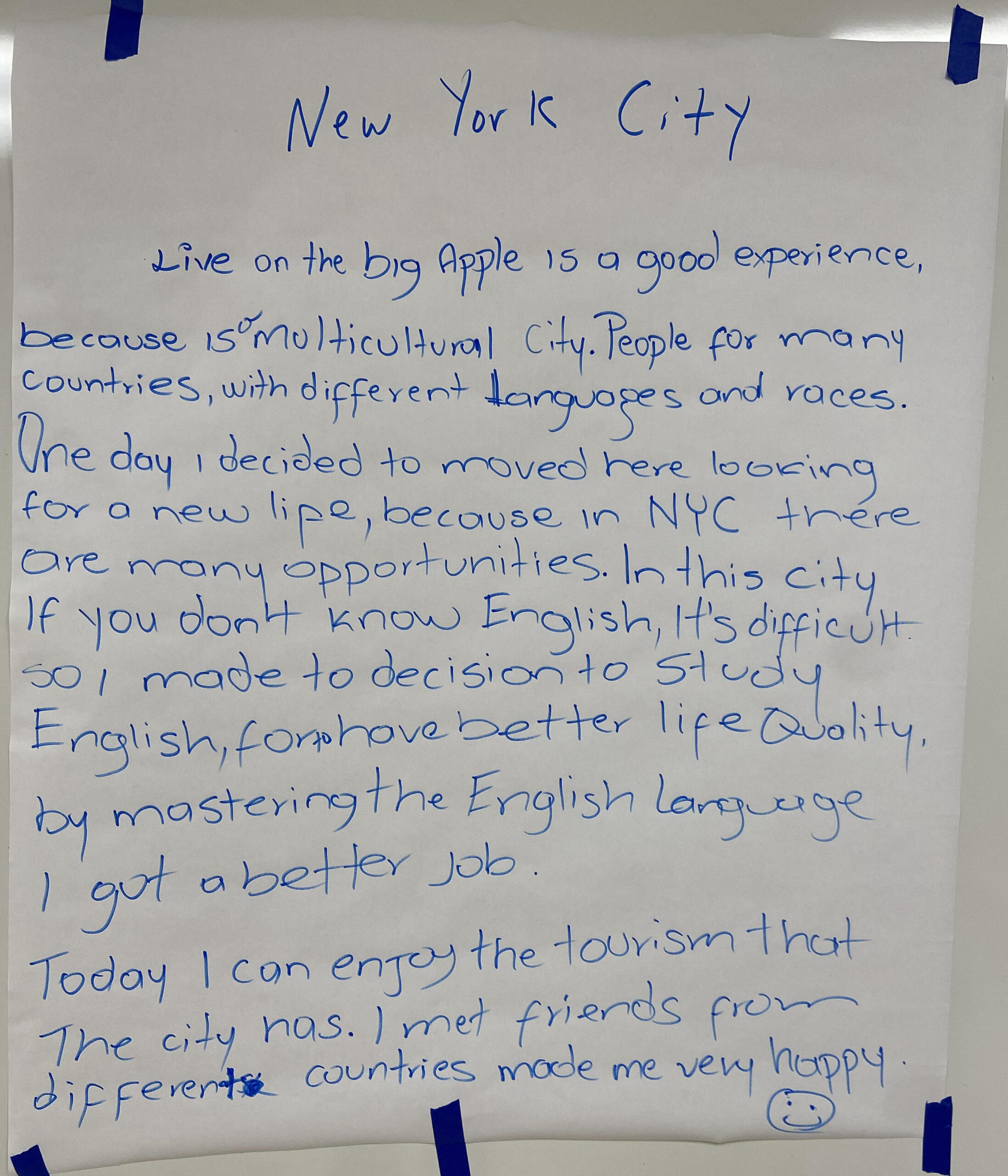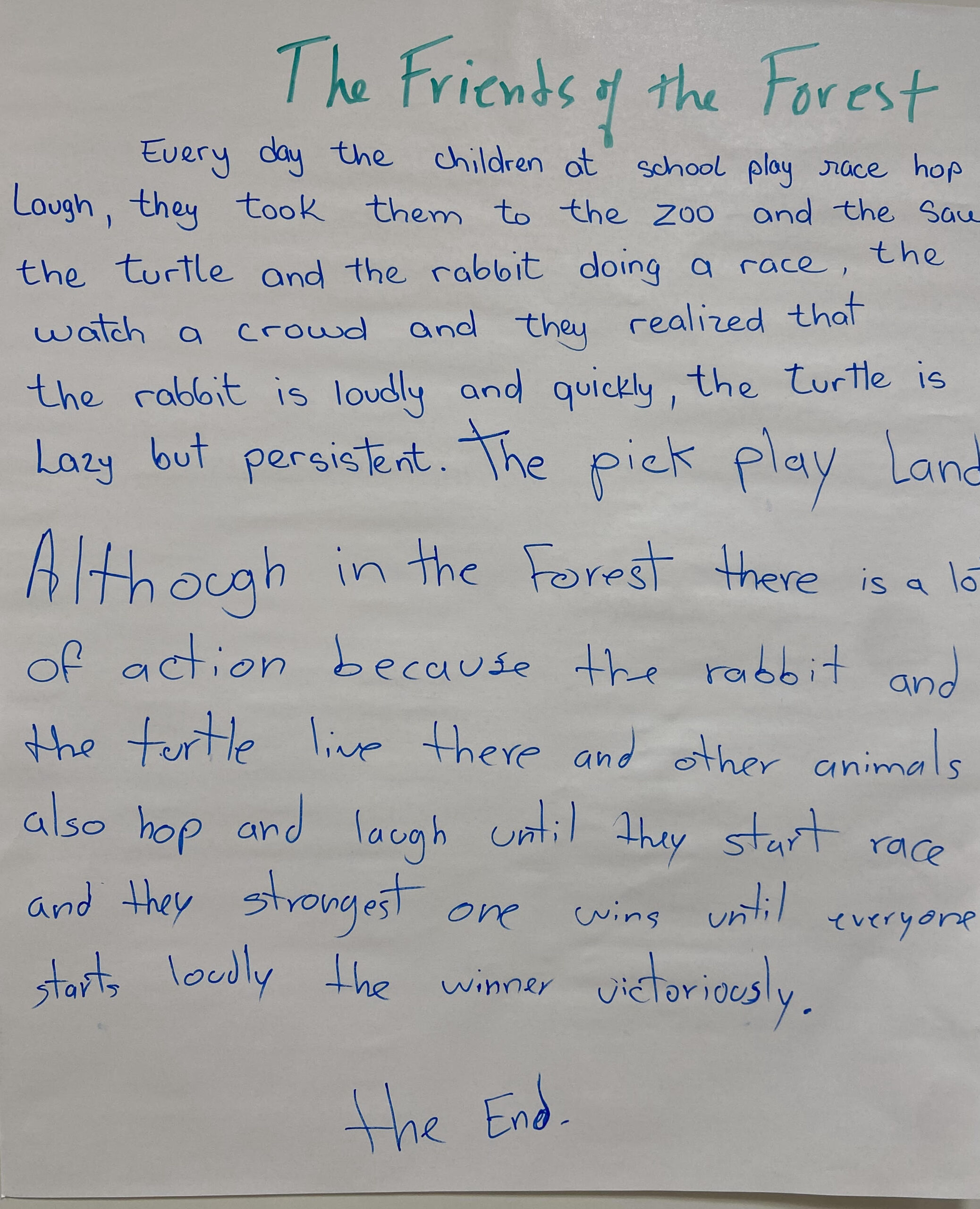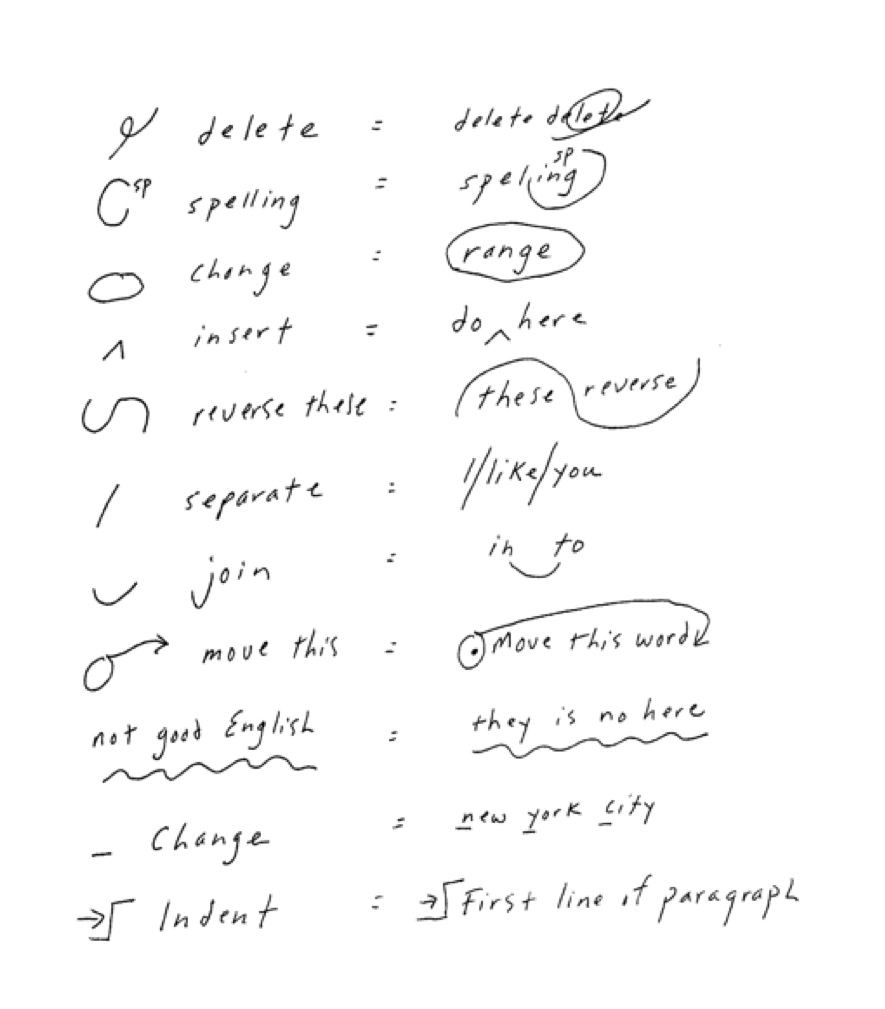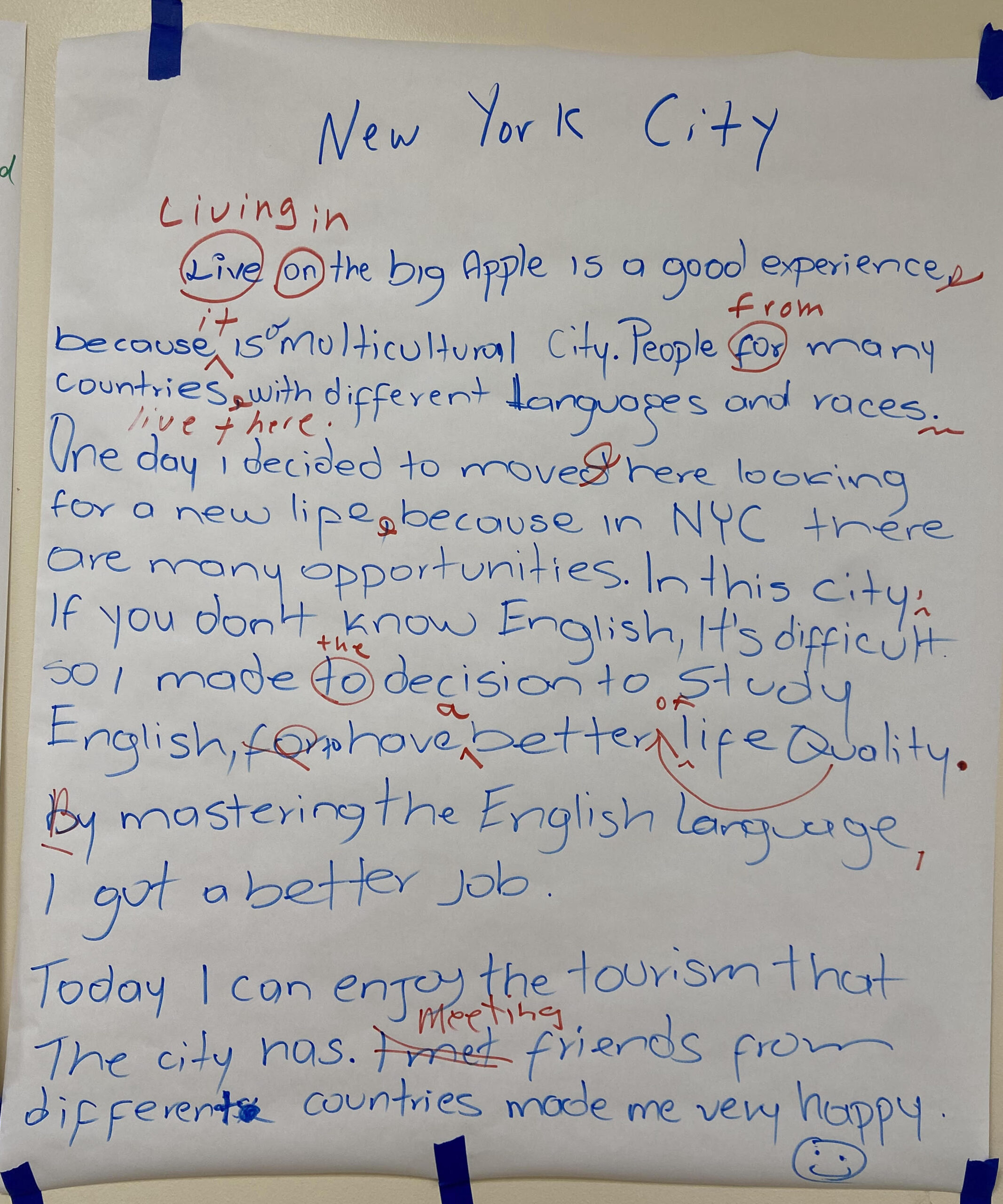..
The Objective:
Spelling. In preparation for reading “The Rabbit and the Turtle,” students will spell the words the teacher says to them. These words are from the story.
Defining. Each student will select one of the spelling words, define it, and use it in a sentence. Students will write their words on index cards.
Speaking. With their index cards, students will stand up and tell the class about their chosen words. Before speaking, the class will create a speaking rubric to evaluate each other’s speech.
Reading. By speaking better, students will read better as well. One skill helps the other. With the teacher, through conversations and exercises, students will become better speakers and readers after this lesson.
Method:
Individuals, groups of three
Materials:
Spelling Words
Handout: “The Rabbit and the Turtle”
Handout: Fill in the Blanks
Handout: Correction Marks
Bilingual dictionaries.
Newsprint and markers
Index cards
PDF with the spelling words, “The Rabbit and the Turtle,” Fill in the Blanks, and Correction Marks :
The Rabbit and the Turtle PDF
…
Progression:
A. Spelling
1. In preparation for reading “The Rabbit and the Turtle” the students have a spelling quiz. The teacher says the words, and the students write them down as best as they can. The teacher writes the correct spellings on the whiteboard. Students do their own corrections.
2. After reviewing the correct spellings with the teacher, each student selects a word. The teacher hands out index cards. On the card, the student defines the word, tells what part of speech it is, and uses it in a sentence. In groups, using bi-lingual dictionaries, students discuss their words. What part of speech is it? What is its definition? How is it used in a sentence?
3. Each student makes sure to write their word and its part of speech on one side of the card, and the definition and its use in a sentence on the other.
…
Examples of Index Cards
B. Speaking Rubric
1. The teacher informs the students that they are going to stand in front of the class and tell the class all about the words they have prepared on their index cards.
2. Before speaking, under the teacher’s guidance, the students create a speaking rubric together. They will use this to evaluate each other’s speaking skills. The class should keep it simple, but divide the rubric into several categories like pronunciation, fluency, comprehension, and success.
C. Speaking
1. In front of the class, students report on their words. They say the word, tell what part of speech the word is, and give its definition and use it in a sentence. The class evaluates each speaker after they speak.
…
D. Reading
1. The teacher hands out the story:
The Rabbit and The Turtle
…….A rabbit and turtle lived near each other in the woods. Every day the rabbit stopped and laughed at the turtle. “My ears are long and my body is thin. I can run like the wind. Your legs are short. You carry your house on your back. I can outrun you hopping on one leg.”
…….One day, the turtle talked back. “I’m just as fast as you are,” she said. “Let’s have a race.” The rabbit laughed again. “Slow is what you are. Fast is what I am.”
…….“Words are one thing and action is another. Until we have a race, no one will know for sure,” said the turtle. Loudly the rabbit laughed even more. Then he picked up a stick. “As far as I can throw this, that’s as far as we will run our race,” he said aiming the stick and throwing it over a stream, past a rock, across a wide field, and through the branches of a tree until it came to rest in a little patch of grass.
…….“Do you see where it landed?” the rabbit asked. The turtle looked for the distant stick and said, “Yes.”
…….“If you’d like, we could put off the race till tomorrow,” said the rabbit with a mocking smile, but the turtle said firmly, ”No. Let’s begin now.”
…….After a crowd of animals showed up to watch, it was decided that a crow and a fox would start the race. “Get on your marks,” barked the fox. “Get ready, get set, go,” cawed the crow.
…….Before the turtle even put one foot forward, the rabbit took off quickly and vanished out of sight. When the rabbit saw the turtle was far behind, he slowed down. “She will never catch up,” the confident rabbit said to himself. While the hot noon sun was shining above, the rabbit saw a shady tree up ahead and decided to stop there and take a rest. Although he only intended on staying a minute, he soon fell off to sleep.
…….When the lazy rabbit opened his eyes, he saw the turtle was way ahead. Before he could even begin, the persistent turtle had passed by the stick.
…….“Three cheers for the turtle!” all of the animals victoriously shouted.
…….“This isn’t fair!” cried the noisy rabbit. “I’m the fastest! I should have won!”
…….“Should have, would have, and could have never win the race,” said the turtle quietly. “Turtles hurry slowly. I won because I never stopped.”
…
2. Students read silently. They do it as quickly as they can, not using dictionaries, but understanding as much as possible by looking at the words they know and trying to understand what is happening through context. After a while, as they read, students may talk with each other about words they see, sharing answers and asking questions.
3. The teacher reads the story out loud. As the teacher reads, the students pay attention to words they don’t know or want to know better.
4. Students take turns reading the story out loud.
5. The teacher hangs up a newsprint and creates a simple chart, writing the words
nouns adjectives verbs adverbs prepositions conjunctions
across the top of the paper.
6. The students talk to each other in groups. Every student must get up and add words to the newsprint chart until there are no words left from the story. Except for articles and pronouns every word in the story should be on the list.
With the teacher as a guide, students make sure that all parts of speech are in their correct columns.
E. Review
1. Fill in the blanks. The teacher creates Fill-in-the Blank sentences using the spelling words. Students work alone filling in the blanks, and when all have finished, they can check with each other to decide what is correct. It is also fine to do this exercise in groups of three or four helping each other find the words. The teacher goes over the sentences with the class making sure all have the right words in the right places.
…
Fill In the Blanks
1. It was so sunny we needed ____________________ umbrellas.
2. I couldn’t find the money. It had ___________________.
3. Brushing my teeth is something I do __________________ day.
4. It is easy to __________________ a baby in a race.
5. The movie was so funny we all had to __________________.
6. __________________ speaks louder than words.
7. We waited for an hour, but she didn’t _____________________ .
8. Did a rabbit and a turtle really have a _______________ ? Did the happy animals really shout _______________________ ?
9. You can save money if you’re _____________________________.
10. My father couldn’t hear so we had to speak ______________________.
11. Their ___________________ in life is to be happy and healthy.
12. The apples are ripe so there are many to __________________ .
13. The ______________________ is a mammal and the __________________ is a reptile.
14. The airplane I’m on will ____________________________ in Newark.
15. ___________________ it was hot, she didn’t turn on the air conditioner.
16. When you speak in front of a __________________, it’s important to feel ________________________.
17. We could ___________________ the parade __________________ the window.
18. Why do children like to ________________________ on one leg?
19. Because he lost an eye, he wore a __________________ .
20. You have to _________________ if you want to go. I __________________ on going
21. The bird flew _______________________ to the ______________________.
22. People who can’t write often leave their _______________________ on a legal document.
23. ________________________ people have a hard time succeeding?
..
Fill in the blanks using these words:
Every Outrun Hop Laugh Action
Pick Rabbit Turtle Land Although
Patch Branch Intend Decide Quickly
Persistent Victoriously Shady Mark
Confident Through Loudly Watch Vanish
Race Crowd Lazy Show up Aim
..
2. Spelling review. The teacher reads the words one more time and the students spell them again. How much better do they spell the second time around?
3. Writing a different story with the same words. In groups, students write brand new stories that have nothing to do with rabbits and turtles. The students write their stories on newsprint, and later, correct any mistakes, with the teacher as guide, using correction marks.
…
Correction Marks
…



